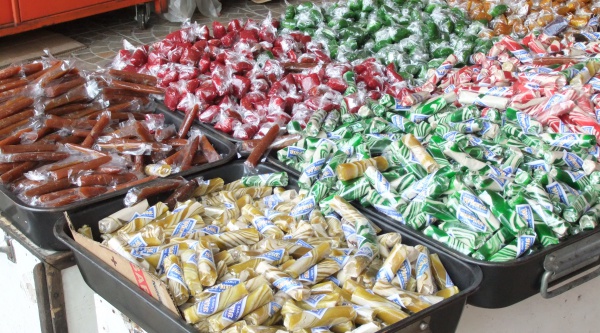Facts About Dodol
Dodol is a delectable Indonesian confection that closely resembles toffee. Made from coconut milk, jaggery, and rice flour, it is celebrated for its sticky, thick, and sweet texture. This sweet delight is not only beloved in Indonesia but also enjoys popularity across various Southeast Asian countries and the Indian subcontinent. In Muslim-majority nations like Indonesia and Malaysia, dodol is a special treat often relished during festive occasions.
Dodol holds profound cultural significance, particularly in regions such as Jakarta and Garut in Indonesia, where the tradition of homemade production remains a cherished practice. Its history is intimately tied to its primary ingredients—palm sugar and rice flour—which makes it one of the oldest indigenous sweets in Maritime Southeast Asia.
There are numerous variations of dodol, each offering unique flavors and ingredients based on regional preferences. Crafting dodol is a labor-intensive process that can take up to nine hours, requiring constant stirring to avoid burning. Beyond Indonesia, dodol is also well-loved in countries like Sri Lanka and the Philippines, where it is known as kalamay. In these regions, preparation methods may vary slightly, often incorporating ingredients like glutinous rice paste and cane sugar.
In Indonesia, you will encounter a myriad of dodol varieties such as dodol garut, dodol durian, dodol sirsak, and dodol nangka, each providing a distinctive and delightful taste experience. Interestingly, the term 'dodol' in Indonesia is also used colloquially to describe someone as 'stupid' or 'illogical,' adding a playful cultural twist to the sweet’s name.
The rich history and cultural significance of dodol elevate it beyond merely being a sweet treat. It is a treasured delicacy with diverse variations and meanings, esteemed by many across different regions.

 Malaysia
Malaysia